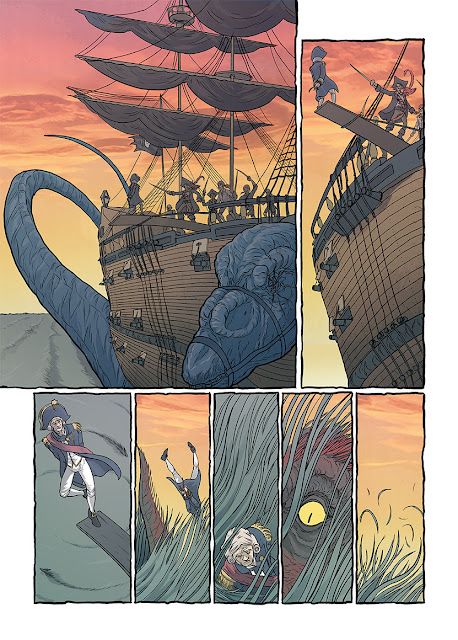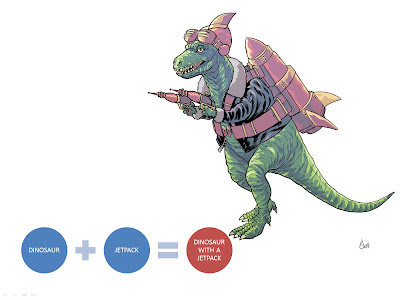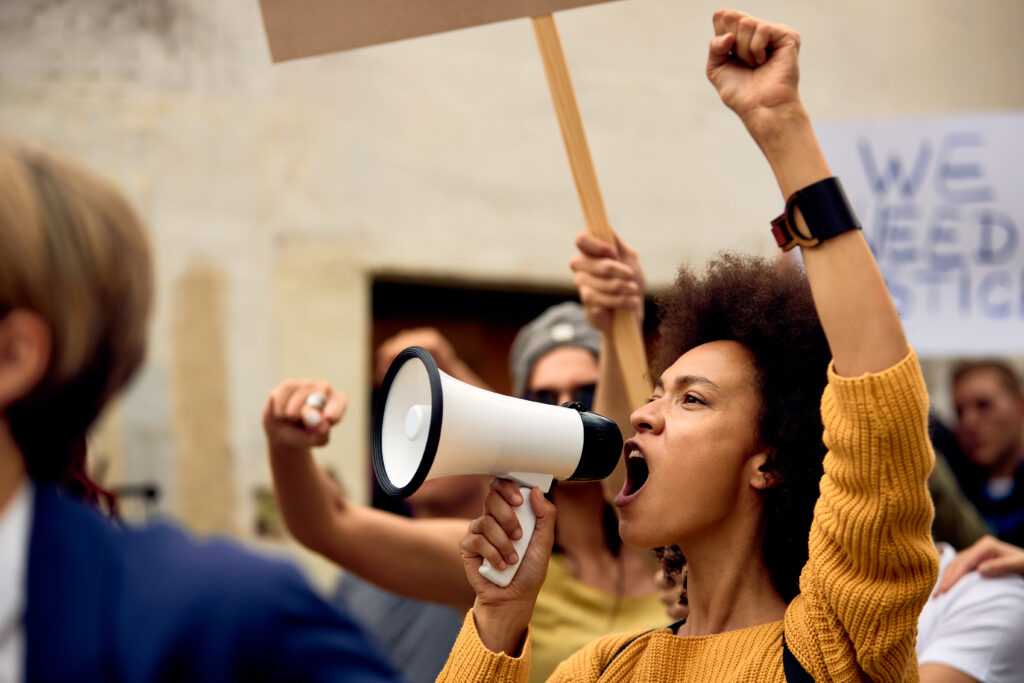A uniquely brilliant thing about comics is simply that they tell a story through drawings. This makes the experience of reading a comic a fantastic collaboration between the creator and the reader, who has to use their own imagination to join those pictures together into a story.

There’s something wonderfully immediate and universal about how this works; you can look at a series of images and you almost can’t help seeing it as a story; it’s something your brain just does automatically.
Obviously text is an important part of comics, too – from dialogue to narration to all the fun and brilliant things you can do with sound effects – but to me the most important thing is telling a story with pictures.
Ideally to me you should be able to look at a page of comics and be able to basically tell what’s going on without even needing to look at the words.

HOW TO CREATE A HERO
My OTHER favourite thing about comics is that anyone can make them. Seriously – anyone. You don’t have to be an amazingly talented artist. You don’t even need to be able to read or write! If you can draw a stick figure, you can tell a story with comics, and EVERYONE can draw a stick figure. Even two-year-olds. Even my MUM.
I’ve actually come up with a handy rule for creating comics characters, so if you ever find yourself getting stuck, just apply this handy rule:

The Principle of the Multiplication of Awesomeness, or ‘Cameron’s Law’.
For example:

This is sort of a joke, but also sort of profoundly true. The point is that you want to create a character that is interesting, or funny, and give them different sides to their nature – sides that may be in conflict – is a great way of doing that.

I like to imagine this is what was going on in my friend and co-writer Daniel Hartwell’s head when he came up with the idea for our story The Pirates of Pangaea in the first place. Our lead character, Sophie, is a very nice, polite and well-brought-up young English girl from the 18th century who finds herself on a strange and terrifying new continent filled with pirates, and dinosaurs, and pirates riding dinosaurs – and finds that she fits right in. And that riding a Tyrannosaurus Rex is pretty awesome fun.

This is a handy bonus side-effect of Cameron’s Law, which is that it makes for things which are SUPER FUN TO DRAW! I love drawing pirates and I (deeply, deeply) love drawing dinosaurs, and in any ordinary story I would be lucky to get to draw either one of those things. But I get to spend my days drawing pirates RIDING AROUND ON dinosaurs. And let me tell you, life does not get much sweeter than that. – Neill
Don’t forget you can download this free comic-writing activity for your secondary school classroom, from beloved author Alan Gibbons. Get students writing and reading!
Neill Cameron is a professional comics writer and illustrator. He is the creator of Mo-Bot High, The Pirates of Pangaea (with Daniel Hartwell) and How To Make (Awesome) Comics, amongst other things. His work can regularly be seen in weekly children’s comic The Phoenix.
Neill also travels the country teaching comics workshops in schools, libraries, museums and really any public space he can get away with it.
Neill quite likes making comics.


